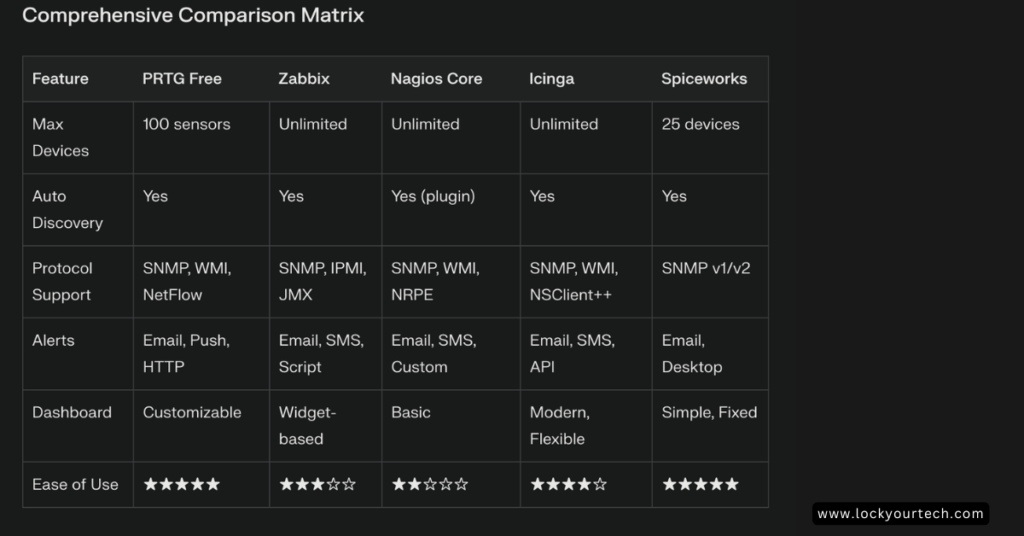You know that uneasy feeling when your home network starts acting weird? I’ve been there! Last year, my smart home devices started behaving strangely, and I discovered unauthorized access to my network. That experience taught me the hard way why network monitoring is essential for every home user – not just IT pros.
Today, I’m sharing everything I’ve learned about home network monitoring tools. After testing dozens of solutions, I’ve narrowed it down to the five best free options that actually work for home users. Let’s dive in!
Understanding Home Network Monitoring Basics
Before we jump into the tools, let me share something I wish someone had told me earlier: network monitoring isn’t just about catching bad guys. It’s like having a security camera system for your digital home. You’ll see who’s connecting, what they’re doing, and when something isn’t right.
The best part? You don’t need to be a tech genius to get started. I was pretty intimidated at first, but trust me – if I could figure it out, you can too!
5 Essential Free Home Network Monitoring Tools
In today’s digital world, keeping your home network secure is more important than ever, but finding reliable tools that don’t cost a fortune can be tricky. That’s why I’m excited to share 5 essential free network monitor tools that I use to monitor my home network security—let’s dive in!
PRTG Network Monitor: Best for Beginners
PRTG has become my go-to recommendation for friends and family, and here’s why: it’s like having training wheels on a bicycle – perfect for learning but still powerful enough for serious use.
The free version gives you 100 sensors, which might sound limited, but here’s a secret I discovered: one sensor can actually monitor multiple aspects of a device. For my home network with about 15 devices, I’ve never run out of sensors!
Key features that make it stand out:
- Auto-discovery that actually works (unlike some others I’ve tried)
- Super easy setup – took me about 30 minutes
- Alerts that don’t drive you crazy with false positives
- Clean, modern interface that makes sense
Pro tip: During setup, focus on critical devices first. I wasted a bunch of sensors monitoring everything before realizing I only needed to watch important stuff like my router and NAS.

Zabbix: The Professional-Grade Solution
Zabbix is like getting a Ferrari for free – incredibly powerful but with a learning curve to match. When I first tried it, I nearly gave up. But after spending a weekend setting it up on my Raspberry Pi, I discovered why IT professionals love it so much.
What makes Zabbix special:
- Monitors literally everything (even my coffee maker’s network connection!)
- Rock-solid security features
- Runs great on a Raspberry Pi
- Handles databases like a champ
Fair warning: If you’re not comfortable with command lines and configuration files, you might want to start with PRTG instead. I learned this the hard way!
Nagios Core: For Power Users
Remember spending hours customizing your first smartphone? That’s Nagios Core – infinitely customizable but requiring patience and dedication. It’s been around forever (in tech years), and there’s a reason for that.
The good stuff:
- Plugins for everything you can imagine
- Super reliable once set up
- Incredibly detailed monitoring capabilities
- Great for learning professional-grade monitoring
The catch? You’ll need to be comfortable with Linux and willing to learn. It took me about two weeks of evening tinkering to get it just right.

Spiceworks Network Monitor: Simple but Effective
Think of Spiceworks as the friendly neighborhood watch of network monitoring tools. It’s straightforward, effective, and perfect for small networks.
What I love about it:
- Monitors up to 25 devices (perfect for most homes)
- Setup takes minutes, not hours
- Real-time monitoring that actually works
- Interface my non-tech spouse can understand
The only downside I’ve found is its basic SNMP support, but for home use, that’s rarely an issue.
Icinga: Modern Monitoring Alternative
Icinga is like Nagios’s cooler younger sibling. It’s modern, sleek, and powerful – but still requires some technical know-how.
Standout features:
- Beautiful dashboards that make sense
- Great visualization options
- Flexible API for automation
- Modern architecture
I use Icinga on my home lab network, and it’s been fantastic for learning advanced monitoring concepts.
Setting Up Your First Network Monitor
Here’s my step-by-step approach that’s worked for dozens of home users I’ve helped:
- Start with PRTG if you’re new to network monitoring
- Focus on monitoring these essential items first:
- Router traffic
- Connected devices
- Internet connection quality
- Suspicious activity alerts
I learned through trial and error that less is more – start small and expand as needed.

Maintaining Your Network Monitoring System
The biggest lesson I’ve learned? Set it and forget it doesn’t work. Here’s my maintenance routine:
Weekly:
- Check alert logs
- Verify all devices are still being monitored
- Look for unusual patterns
Monthly:
- Update the monitoring software
- Review and adjust alert thresholds
- Back up configurations
This might sound like a lot, but it takes me about 15 minutes a week now that I’ve got my routine down.
Wrapping Up: Which Tool Should You Choose?
After years of experimenting with these tools, here’s my honest advice:
- Complete beginners: Start with PRTG
- Tech-savvy users: Try Spiceworks first, then graduate to Zabbix
- Linux enthusiasts: Go straight to Nagios Core or Icinga
- Home lab owners: Zabbix on a Raspberry Pi is your best bet
Remember, the best network monitoring tool is the one you’ll actually use. I started with PRTG, moved to Zabbix, tried them all, and now use a combination of tools for different purposes.
Have you tried any of these tools? I’d love to hear about your experiences in the comments below. And if you need any help getting started, just ask – we’ve all been there!



